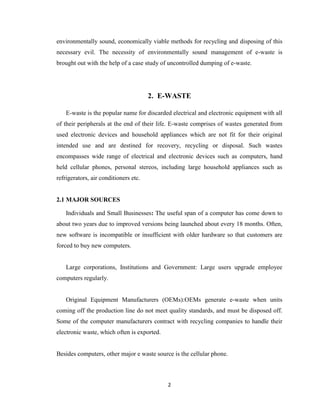This document discusses e-waste, which is defined as discarded electrical and electronic equipment. It notes that e-waste is one of the fastest growing waste streams due to high obsolescence rates of electronics. E-waste contains toxic components like lead, cadmium, and mercury if improperly treated or discarded. Developed countries generate most e-waste but export it to developing countries in violation of international agreements. In India, e-waste is illegally imported and then crudely recycled, polluting the environment due to a lack of regulation. The document classifies e-waste and examines its composition and the health effects of some common toxic components like lead, cadmium, and mercury.









































